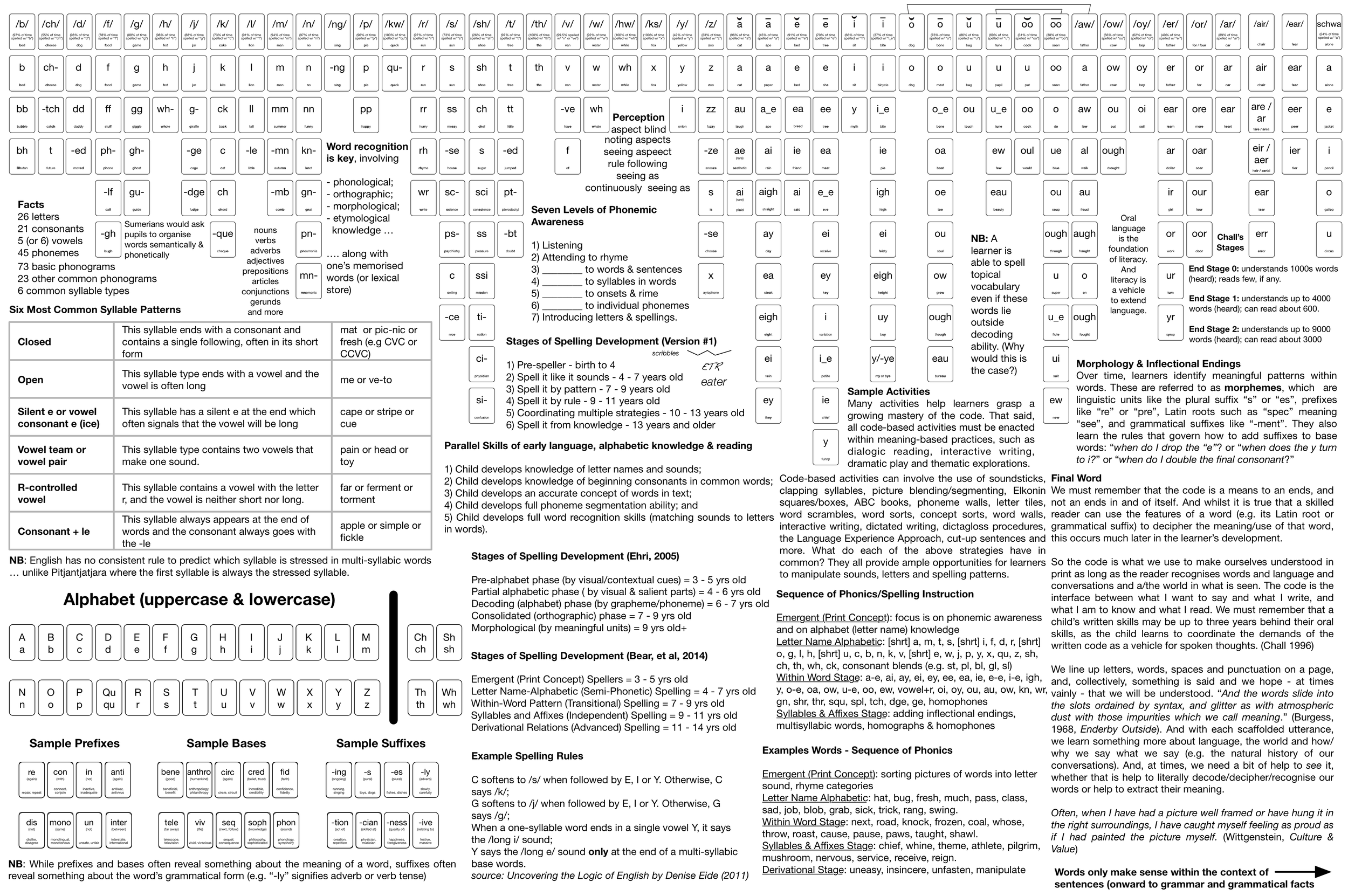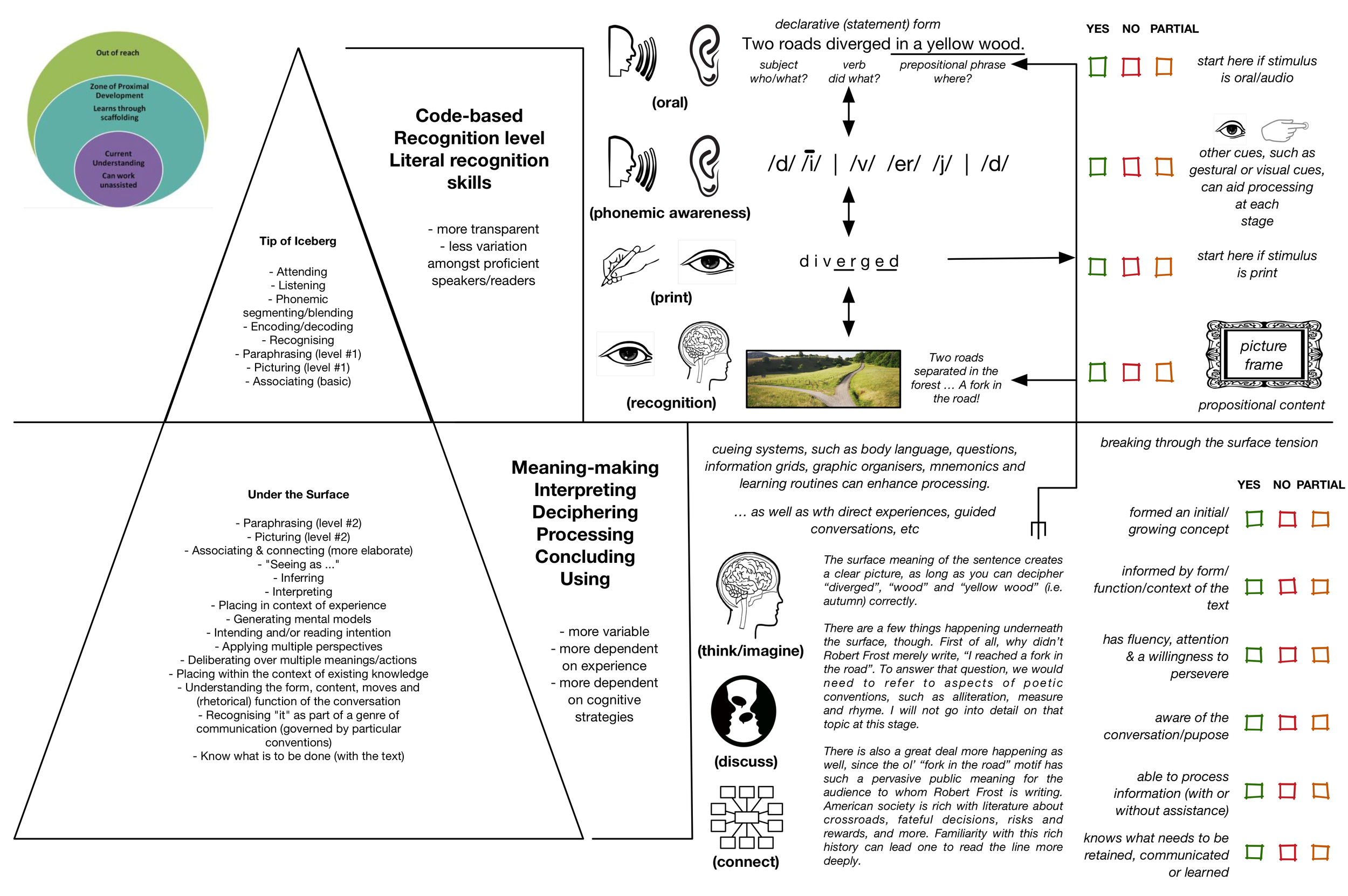Some aspects of literacy are tied up in the skills of being able to read (decode) and write (encode) the words on the page (consistently and methodically). Other aspects are extra-linguistic and are tied up in ways of speaking, seeing and doing. In this blog post, we examine the latter part of this dichotomy.
Read the following two textual samples below before proceeding with the blog post for a discussion.
QUOTE FROM A MECHANIC’S GUIDE
To change the oil, slide under the vehicle and locate the oil drain plug. Place an oil catch pan beneath it to collect the old oil. Unscrew the drain plug using a socket wrench and allow the oil to drain completely. Once the oil has drained, locate the oil filter. Using an oil filter wrench, loosen and remove the old oil filter in a counterclockwise motion. Ensure the rubber gasket comes off with the filter. Before installing the new oil filter, lightly coat the rubber gasket with fresh oil. Then, thread the new filter onto the engine by hand, ensuring it is snug but not overtightened. Replace the oil drain plug, tightening it with a socket wrench in a clockwise motion.
QUOTE FROM A FABLE
Once upon a time, in a lush and verdant land nestled between mighty mountains, there existed a serene valley. This valley was blessed with crystal-clear streams that meandered gracefully through its heart, glistening in the golden sunlight. The waters were pure and abundant, supporting a thriving ecosystem and providing life to all who dwelled within. But as time passed, the valley faced an unprecedented threat. A dark cloud settled upon the land, bringing with it torrential rains that turned the tranquil streams into raging torrents. The once-pristine waters grew murky and polluted, carrying with them the remnants of human negligence and greed.
Both texts express information - albeit substantially different types of information.
If I position myself as a literate person, I scrutinise the script in order to access each text. Can I decode these words? Can I follow the logic of these sentences? Can I derive pictures, sense or intention from these sentences and from the text as a whole? If I can do this, what does it all mean? How is it useful? What is important in the message? The answers to such questions rely upon a complex web of prior knowledge, of context, my immediate circumstances and my conversations with others.
We shouldn’t underestimate how difficult it may be to simply derive sense from a text, particularly the technical one. Such literal comprehension is an important starting point. With more experience, I am able to look at the text as a series of choices (Talbot, 2010; Vygotsky, 1978).
“Why this and not that? Hmmm! Let’s see what happens if I move some of these details around (or interpret them differently). What becomes of the case then?”
My position to the texts differ based on my capacity to manipulate states of affairs depicted within each text as well as other possible states of affairs that are not represented in the text. I assess what is in the text as well as what could have been in the text to better consider the choices that have been made.
This takes us back to Wittgenstein’s inspiration for the picture theory of meaning. Ludwig Wittgenstein read about a court case in which there was a vehicle accident (of some sort). The courtroom model depicted the circumstances with tangible figurines in a similar way to how words in a sentence might convey a scene. During the case, all parties would scrutinise this model to ascertain what really happened. Questions were also asked to clarify the scene, including the names of various elements. In doing so, parties would manipulate the model to get to the actual state of affairs of what occurred (from all of the possible ones).
One could draw different conclusions based on the various possible states of affairs. Those best placed to properly assess the model were those with the most first hand experience. Such witnesses would manipulate the model to suggest the true state of affairs, just as if they were carefully selecting their words in order to convey the proper picture of events. Hopefully, one came to the true and sensible picture!
Let us turn to the texts at the start of this blog post. In relation to the technical text, my comprehension relies on some familiarity with basic car mechanics so that I can interface between actual experience and the experience expressed in the text, so I can asses whether the picture is correct (or complete). I also need this context to be able to action what is described within the text. My comprehension can be assessed by how well I can apply the instructions in the world.
In such case, the act of reading is an act of simulating actions in the world. If I engage in this car mechanics on a day-to-day basis, then I have the opportunity to become competent in the field language as well as how instructional texts of this sort might mediate valued day-to-day activity. In other words, I can become competent at literacy within the context of the activities in which language and literacy are embedded, whether it is gardening or cooking or star gazing. Scaffolding the comprehension of the written and spoken also involves the carefully scaffolding of human activity.
“To bring into prominence the fact that the speaking of language is part of an activity, or of a life-form.” Wittgenstein, PI 23)
“Our talk gets its meaning from the rest of the proceedings."(Wittgenstein, OC 229)
Let us now turn our mind to the other text. Let us call it a fable. In the case of the fable, the author may or may not be aware of the many associations that a reader may attach to water, rain and cleansing, which all may come to reinforce how the text potentially expresses a view about a fragile environmental balance. If I happen to live in a place which has experienced dramatic environment and cultural change in the face of industrialism, then the fable may be more meaningful than as simply a descriptive story.
It is even more meaningful if am accustomed to stories being used to navigate shared experiences and values. To another audience, however, it all might be utter nonsense or a nice story (at face value) or something altogether different - a misleading fable that limits our potential for growth and progress.
There is a hidden assumption here. The assumption is that I occupy a form of life in which some texts have a relevance and value (and other don’t). In that form of life, a literate person is one who can decode and engage in literal comprehension, as well as engage with texts for a multitude of purposes. How I come to interpret this picture is tied up in the conversations that I have with others.
“Children are born into a community and simply acquire the community’s language and the community’s world-picture, children do not learn single sentences or issues, but a whole language or a whole world-picture.” (Kober, 1996, pg. 422)
Where does all of this lead us? As stated at the outset, some aspects of literacy are tied up in the skills of being able to literally read (decode) and write (encode) the words on the page (consistently and methodically). Other aspects are extra-linguistic and are tied up in ways of speaking, seeing and doing. Comprehending texts is embedded within human activity, imagination and discourse, which involve particular domains of language (Gee, 1996). The latter aspects are tied up in problem solving, agency and intentionality. It is not a message that is new or novel, but still own upon which to reflect.
References
Gee, J. (1996). Social linguistics and literacies: ideology in discourses (2nd Edition). London: The Falmer Press.
Kober, M. (1996). Certainties of a world-picture: the epistemological investigations of On Certainty In H. Sluga, H. and D. Stern (Eds.), The Cambridge companion to Wittgenstein. (pp. 411 - 441) Cambridge: Cambridge University Press.
Talbot, J. T. (2010). Where does language come from? The role of reflexive enculturation in language development. Language Sciences 32 (1) 14-27.
Vygotsky, L.S. (1978). Mind in Society. (M. Cole, Ed.) Cambridge: Harvard University Press.
Wittgenstein, L. (1969). On Certainty. Edited by G.E.M. Anscombe and G.H. von Wright. Translated by D. Paul and G.E.M. Anscombe. New York: Harper Torchbooks.
_____________ (2001). Philosophical Investigations (3rd ed.). Oxford, UK: Blackwell Publishing.











